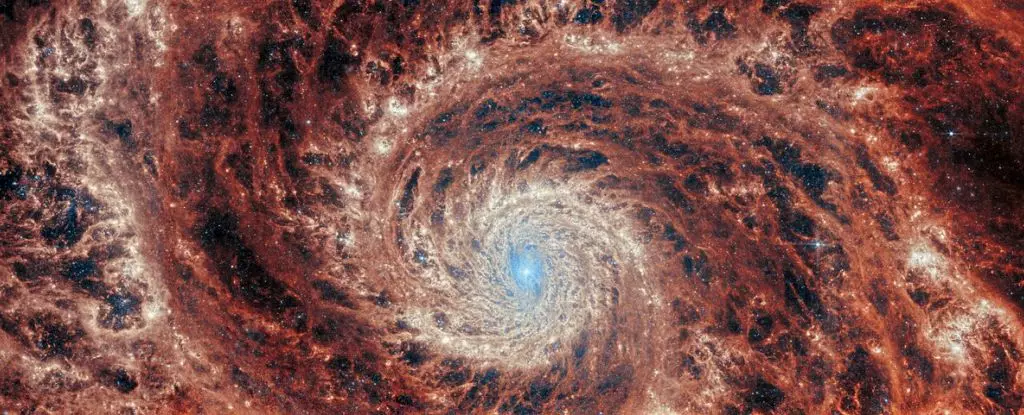The unraveling of cosmic history has always fascinated astronomers, particularly in how galaxies formed in the universe soon after the Big Bang approximately 13.8 billion years ago. Recent findings from the James Webb Space Telescope (JWST) have sparked renewed discussions regarding the timeline and mechanisms behind galaxy formation, specifically highlighting the early emergence of spiral galaxies. This article dissects these groundbreaking revelations while exploring the implications for our understanding of the universe’s evolution.
Deep within the cosmic tapestry, recently observed data from the JWST has identified an extraordinary galaxy dubbed Zhúlóng, named after a mythical Chinese dragon known for its luminous torch. This galaxy dates back 12.8 billion years, aligning it with a pivotal moment in cosmic history known as the Cosmic Dawn. Astronomers led by Mengyuan Xiao from the University of Geneva have published findings revealing that Zhúlóng appears to possess a fully developed spiral structure, indicating that complex galactic designs arose much earlier than scientific models previously suggested. Their study, available on the preprint server arXiv, brings forth the possibility of reconceptualizing early galaxy formation theories.
Galaxies are classified into various categories based on their morphology—an essential aspect in galactic studies. The grand design spiral galaxies are characterized by well-defined arms that spiral vividly from their centers, embodying an idealized form of galaxy structure. The existence of Zhúlóng, with its pronounced spiral arms and organized stellar disk, challenges the presumed rarity of such galaxies in the early universe. Prior research indicated that spiral galaxies were almost non-existent more than 11.5 billion years ago, but the findings concerning Zhúlóng suggest an abrupt emergence, altering our understanding of when these beautiful structures began to populate the cosmos.
Zhúlóng’s characteristics reveal important insights into the processes that governed the formation of massive galaxies in the early universe. With dimensions reaching approximately 62,000 light-years in diameter and a mass comparable to the Milky Way, researchers argue that Zhúlóng represents a paradigm shift in our comprehension of galactic evolution. The conclusive data indicate that structures we associate with mature galaxies formed much sooner, potentially indicating that Milky Way-like galaxies can materialize at a pace ten times swifter than anticipated based on local universe parameters. This newfound understanding raises questions regarding the dynamics of matter collection and star formation in the universe’s infancy.
The physical characteristics of Zhúlóng further illuminate its significance in the cosmic hierarchy. Not only does it have a quiescent supermassive black hole at its center, indicating a relatively calm environment, but the galaxy’s star formation rate is noteworthy as well, ranging between 20 and 155 solar masses per year. Such observations imply that despite its early formation, Zhúlóng is transitioning into a serene, stable stage—one that mirrors more mature galaxies seen today. This juxtaposition between its age and its complex morphology poses essential questions: What factors led to this early and rapid formation? Might there have been conditions exclusive to the early universe that facilitated such ornate structures?
Zhúlóng not only stands as a testament to the capabilities of the JWST but also paves the way for future research endeavors. As astronomers continue to investigate the observations from the Cosmic Dawn, the data retrieved from galaxies like Zhúlóng could revolutionize our understanding of cosmic evolution during one of the universe’s most formative epochs. With ongoing developments in observational technology, the quest to unravel the secrets of the universe’s early structures has only just begun.
The discovery of Zhúlóng necessitates a reconsideration of existing theories concerning the emergence of spiral galaxies. This remarkable example illuminates a complex yet beautiful narrative of cosmic history that speaks to the rapid development of structures in our universe. As we venture deeper into the vastness of space with advanced instruments like JWST, we may continue unraveling the captivating mysteries that linger from the dawn of time itself.


Leave a Reply